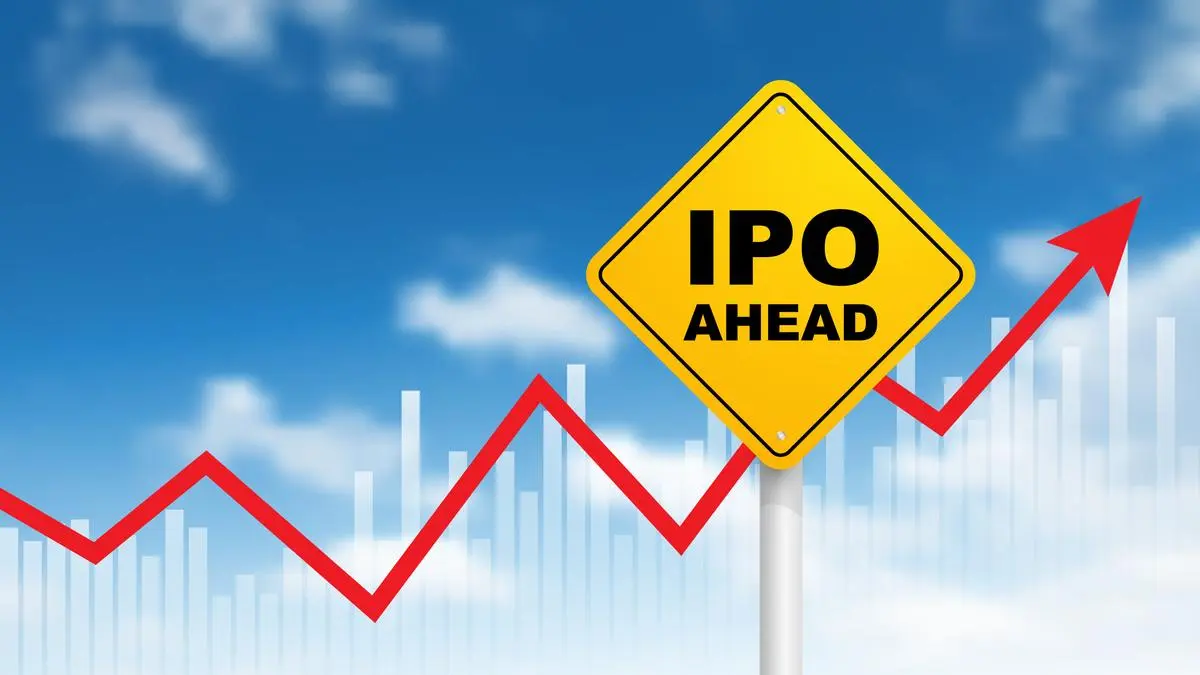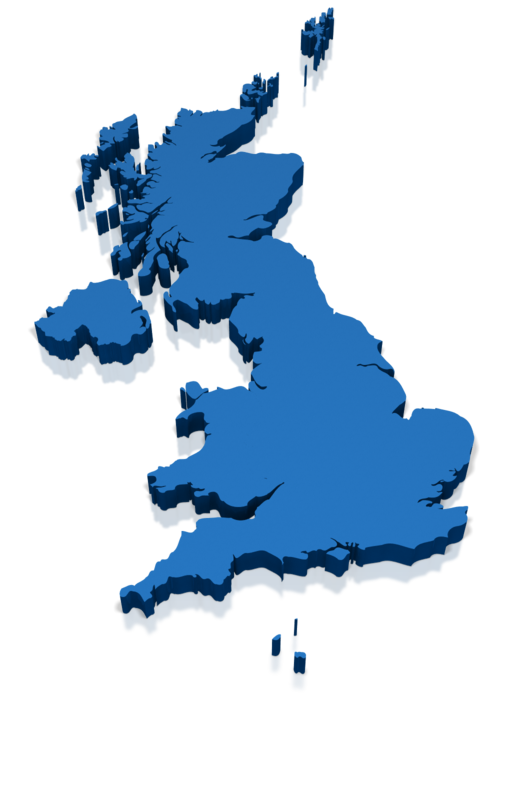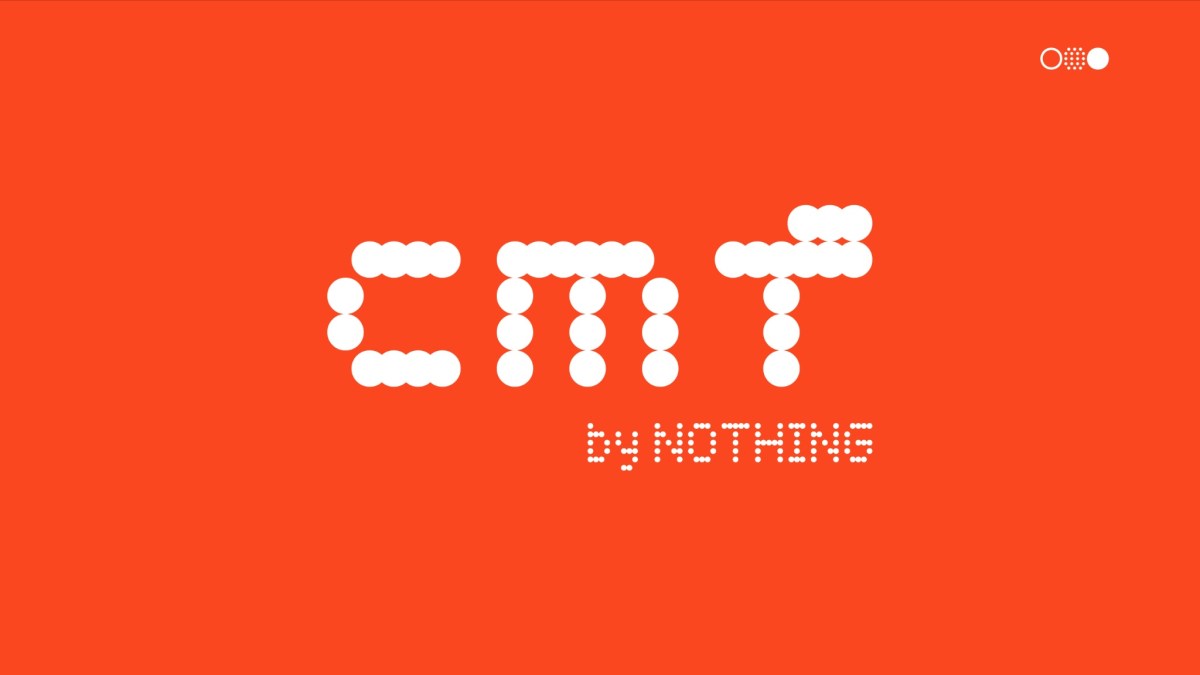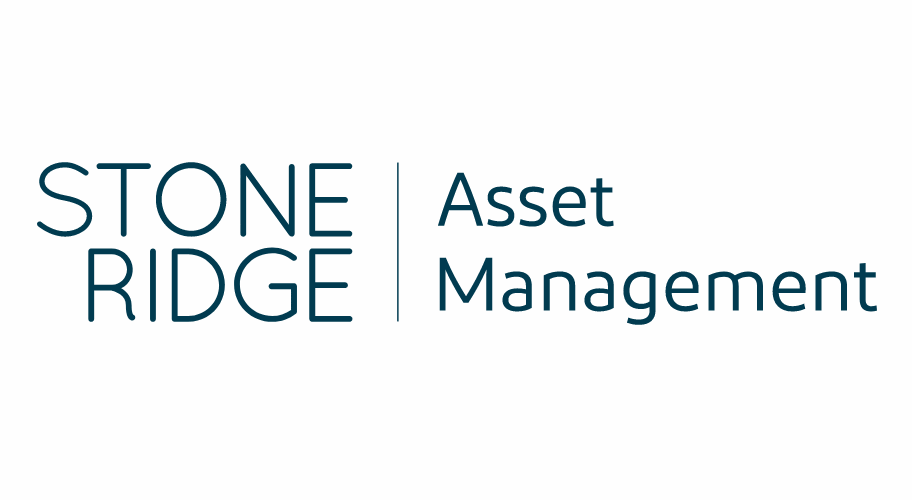Episode #446: BlackRock’s Rick Rieder on the State of the Markets
![]()
![]()
![]()
![]()
![]()
Guest: Rick Rieder is BlackRock’s Chief Investment Officer of Global Fixed Income, Head of the Fundamental Fixed Income business, and Head of the Global Allocation Investment Team. Mr. Rieder is responsible for roughly $2.4 trillion in assets. He is a member of BlackRock’s Executive Sub-Committee on Investments, a member of BlackRock’s Global Operating Committee, and Chairman of the firm-wide BlackRock Investment Council.
Date Recorded: 9/19/2022 | Run-Time: 41:03
Summary: In today’s episode, Rick shares his view of the world today, touching on inflation, the Fed, and why now is the most interesting time he’s ever been in the markets. He shares where he sees opportunity given all the risks in the markets and even shares his “secret to trading.”
Sponsor: AcreTrader – AcreTrader is an investment platform that makes it simple to own shares of farmland and earn passive income, and you can start investing in just minutes online. If you’re interested in a deeper understanding, and for more information on how to become a farmland investor through their platform, please visit acretrader.com/meb.

Comments or suggestions? Interested in sponsoring an episode? Email us [email protected]
Links from the Episode:
- 0:38 – Sponsor: AcreTrader
- 1:53 – Intro
- 2:26 – Welcome to our guest, Rick Rieder
- 4:17 – Rick’s framework for thinking about the current state of interest rates and inflation
- 6:17 – Rick’s quantitative and qualitative approach to fixed income
- 7:32 – Rick’s happy hour guess on the likely outcome of inflation over the next year or two
- 10:39 – Thoughts on allocation in fixed income and choices in today’s market
- 13:14 – Rick’s sentiments on investment opportunities outside of the US
- 15:30 – The main concerns Rick’s hearing from clients and allocators lately
- 22:10 – Some of the weirder places in fixed income Rick is willing to allocate to
- 26:37 – It’s the most interesting time he’s ever seen in markets; The Black Swan
- 31:01 – Rick’s perspective on the future of fixed income
- 34:32 – Rick’s most memorable investment and what he’s excited about today
- 37:37 – Learn more about Rick; blackrock.com or Twitter
Transcript:
Welcome Message: Welcome to “The Meb Faber Show” where the focus is on helping you grow and preserve your wealth. Join us as we discuss the craft of investing and uncover new and profitable ideas all to help you grow wealthier and wiser. Better investing starts here.
Disclaimer: Meb Faber is the co-founder and chief investment officer at Cambria Investment Management. Due to industry regulations, he will not discuss any of Cambria’s funds on this podcast. All opinions expressed by podcast participants are solely their own opinions and do not reflect the opinion of Cambria Investment Management or its affiliates. For more information, visit cambriainvestments.com
Sponsor Message: In the first half of 2022 both stocks and bonds were down. You’ve heard us talk about the importance of diversifying beyond just stocks and bonds alone on this podcast. And if you’re looking for an asset that can help you diversify your portfolio and provide a potential hedge against inflation and rising food prices, look no further than farmland. Now you may be thinking to yourself, “Meb, I don’t want to fly to a rural area, work with a broker I’ve never met before spend hundreds of thousands of dollars to buy a farm and then go figure out how to run it by myself. Sounds like a nightmare.”
That’s where AcreTrader comes in. AcreTrader is an investing platform that makes it simple to own shares of agricultural land and earn passive income. They’ve recently added timberland to their offerings, and they have one or two properties hitting the platform every week. So, you can start building a diverse ag land portfolio quickly and easily online. I personally invested on AcreTrader and I can say it was an easy process. If you want to learn more about AcreTrader, check out episode 312 when I spoke with the founder, Carter Malloy. And if you’re interested in a deeper understanding on how to become a farmland investor through their platform, please visit acretrader.com/meb that’s acretrader.com/meb.
Meb: Hello, my friends, we got a big time show for you today. Our guest is Rick Rieder, the CIO of Global Fixed Income at BlackRock and head of the BlackRock Global Allocation team. Rick is responsible for over 2 trillion in assets. On today’s episode, Rick shares his view of the world today touching on inflation, the Fed, and why now is the most interesting time he’s ever seen in the markets. He shares where he sees opportunity, given all the risks in the markets and even shares his secret to trading. Please enjoy this episode with BlackRock’s Rick Rieder. Rick, welcome to the show.
Rick: Thank you very much. Thanks for having me.
Meb: Let’s talk about markets in general, you guys put out a lot of great research. And we’ll get into all sorts of the corners of the world. But why don’t we start with just what’s the world look like today? Just thinking about the broad macro environment it’s been a weird year for a lot of people, stocks, bonds, broadly down together in tandem. Here we are September 19th, we’re recording this. What’s the world look like to you today? What are you thinking about?
Rick: I was just talking with a group of young people came in our business. And I said, you know, one thing I’ve learned about markets, one out of every four or five years or so have a real rhythm to them. And every four or five years, you got to go through this retrenchment. And it was like unbelievably rhythmic, ’90, ’94, ’98, ’02. And then it didn’t happen in ’06, you know, FedTech policy too easy, too long. And then ’08, the whole thing ignited. And then within this period of easy policy for a long period of time. And now the thing is we’ve created some inflation and it’s pretty hard to find opportunities in the marketplace to create real upside. When you’ve got all the central banks that are tightening, and pulling back, and squeezing financial conditions. I saw a quote that this is the worst treasury market since 1788, which I don’t know who was trading treasuries during the Civil War, but certainly in the last 50 years. You’ve never seen anything like markets going down in tandem, bonds and stocks like this.
One thing I’ve talked to a lot of young people about, you got to go through these periods. You hate going through, them but it creates a really good opportunity on the other side. Markets have to recalibrate, you know, you get this frothy, incredible demand and people want to generate return, generate return, generate return and make money, and they got to recalibrate. And this has been a pretty painful recalibration. So that is one where I think you got to have a ton of patience and a lot of cash, and just sit on the sidelines for a bit, so as not to give back too much.
Meb: So much of the investing world, such a big part of it is getting us through the various cycles and not taken out of the game and not getting taken to the woodshed. You have to just survive the different parts. And they can last a long time. The topic we began this podcast with is something majority of our peers, really a high inflation world, haven’t dealt with in their career, at least not in the rising sense. It was more of a declining inflation time. But while we’re on inflation, that’s something usually in the path of rates, as hard as they are to forecast, that’s something someone in your seat thinks a lot about. What’s the framework right now for thinking about rates as well as inflation?
Rick: You got to be really careful about a lot of interest rate risk. When the Fed tells you…they can’t be any more clear in communicating. We’re dealing with inflation. It’s as clear as I’ve ever done all my years, including sitting on the Feds Investor Advisory Committee for eight years, I’ve never seen them be, “Read my lips, this is what we’re doing.” Generally, that is an environment where rates are going higher. I think you’re reaching the tail end of those rate rises. But you can’t mark that down yet, because inflation is still sticky. We got a horrible CPI report, and you can’t mark down what the Fed has done. I thought, because you’re seeing things like freight costs come down, commodity costs come down, supply chain easing a bit, the Fed would get to a level and then pause for a while. But now you got to wait a little bit. And you got to just maintain your interest rate exposure.
Listen, I think 10-year treasuries, I don’t think they’re going to go much higher than 3.5%, 3.75%. But I think you got to be patient and cautious around that. You don’t see this a lot. I think the Fed’s doing a lot of we’re going to tighten policy. And then I think they’re doing a lot of praying alongside of it. It’s like, “I hope this works because I don’t want to keep going further, because it’ll take a lot of people out of jobs.” But I think in the interim, if you’re investing in interest rates, you want to stay shorter on the curve. I’ve never been more excited about six-month commercial paper or one-year corporate bonds, because they don’t go down a lot in price, they actually put yield.
Meb: I talked about the yin-yang, back and forth framework of qualitative, quantitative, we’re a mostly quantitative shop here. But does it work for you guys? The fixed income world, in my mind, is like the most data-driven part of the investment landscape. Is your approach a combo or does it lean one way more than the other?
Rick: I mean, I think it’s really hard to do one or the other today, a lot of pure quantitative is off of history. And here’s what happened in history. So, this should manifest itself again. And what we’re seeing today is historic and unprecedented. So, we tended to be much more on the fundamental side. But we have really shifted to still fundamentally oriented, and I would say that’s our base, our home base, but definitely shifted towards analytics, data simulation, and using AI where we can in a multitude of ways, not just trying to come up with signals for the economy, inflation, but portfolio construction, stress testing, scenario analysis, the ability to use data is extraordinary today. I mean, it’s extraordinary.
So, we tend to come at security selection, sector allocation, more from a fundamental point of view. But then signals, portfolio construction, that’s been our biggest initiative the last few years is to get much more analytically oriented.
Meb: As we look at this inflation cycle, this can be quantitatively driven comments, or just Rick’s happy hour best guess. What do you think is like the most likely scenario? We obviously have the tail sides where things could go crazy, and maybe your likely scenario is not moderate. But as we look out at sort of the rest of this year, next year, is the expectation of inflation moderating down from this aid and change level?
Rick: Moderating down but not to the two. In the two factors, you’ll see real base effects on energy and energy costs coming down. We’re going to get through a lot of weather, and what happens, obviously, in the war, and in Europe, and then food costs that have also spiked higher on the backside of this dynamic of Ukraine, that’s going to come down. The big two are really tricky. One is shelter. The Federal Reserve’s trying to bring down inflation, you got to be really careful about not shocking the mortgage rate too high. We saw that movie play out in ’08 and three-quarters of the wealth in the country are in people’s houses. You got to be really careful about that one. But unless the Fed builds a lot of multifamily homes, it’s pretty hard to bring the cost of shelter down, as we’ve seen in the recent CDI. So that’s a big one we’re watching. How does that come down?
And then the second one being wages, there are not enough humans for the jobs available today. Eighty percent of the jobs are in the service sector. Things like health care, education, restaurants, hospitality, there’s help wanted signs on every door in those spaces. So wages are going to stay firm for a while. I think inflation will stay sticky high. But it’s going to come down off of these levels. And there’s some pretty encouraging signs. The one thing I worry about is if the Fed over tightens. I did this a while ago, I looked at how many jobs bring down demand for oil, because oil prices are driven by supply not demand. If you really wanted to shock demand, you would have to bring down oil, you’d have to take a couple million people out of jobs to bring oil down incrementally. That’s crazy. Why would you ever do that?
I think some of these things are tricky to bring down. But, you know, if you look at inflation expectations, 2-year inflation is 2.35. Five, 10-year inflation is under 2.5. Markets think it’s coming down. And I think it’s generally right. It’s just we ran for 20 years under 2, but 2.5 is not that scary. And as long as the momentum is improving towards getting inflation down. By the way, part of what I think nobody focuses on, as long as wages are reasonable, particularly for low to middle income, you can run a little bit more inflation as long as your wages are high because your net disposable income is in pretty good shape. So, I always feel like it’s like a one-word answer, we have to have inflation at two. But what if inflation’s at two, but wages were three and a half? That’s not a bad scenario. So that’s part of why I think the Fed will relax and it’s not as panicked as others about, “Gosh, we got to get this thing to two or else.”
Meb: I think the expectation certainly as we look to the polls and whatnot, at least on my feed, the vast majority says that inflation we’ve hit the peak print. And I think the majority response says we’re going to be closer to five to seven by year-end. So we’ll see if any more surprises are in the cards. But we’ve talked a little bit about inflation and kind of where we are in the opportunity set to get to I mean, there’s so many macro factors going on. How do you think about allocating? You guys are famously more unconstrained, I think, than a typical manager. And fixed income, I feel like many people, they think of fixed income, they just think government bonds and treasuries and that being about it. But you guys have a pretty wide opportunity set. Maybe tell us a little bit about what some of the choices on the buffet are, and then what looks good.
Rick: I don’t remember ever, ever being in this situation around asset allocation and fixed income, that the menu was so limited on what created positive return in the near term. However, there’s a gift and maybe the gift of QT is I can wait. And I can click coupon. If you think about where we are for two years, I use this example of Amazon. Two and a quarter years ago or so, they issued three-year Amazon bonds at 0.25%. Think about it, who would ever finance Amazon at 0.25%? Just buy the stock. Like why would you do that?
But remember, rates were at zero. Now you can buy nine-month Amazon at close to four. If you can buy inflation breakevens at two and change, I’m funding Amazon at four, my real rate is positive two, that’s a pretty good asset. So, you have China-Taiwan risk, you have Nord Stream risk, you have weather risk for nat gas prices, you have I don’t know how far inflation is coming down. So, Fed have to tighten FCI further. If I can clip, and by the way, a lot of assets in securitized and otherwise, that I can hold one, two-year maturing debt get four to five. How about some AAA commercial mortgages at five and a quarter? The other day, that’s about a two-and-a-half, three-year average life.
I don’t know. I just want to clip four and five, and then come back in three to six months and say, “Okay, the clouds parted. And in the interim, I can clip the coupon. And when you think about where we were two years ago, you had to sit at zero. Now you can sit at four to five, and then it could take a little bit of high-yield risk. I think you should take a little bit of high-yield risk. You know, you can get eight to nine. Is the economy slowing? Yes. Could you get more default? You can make a lot of mistakes at eight to nine. Remember, a couple of years ago, it’s like three and a half for high yield, three and a half.
So anyway, we’re doing less in residential real estate because I think that’s trickier for the housing comments. We’re doing less than commercial real estate because I think there are some areas that are broken in commercial real estate. And I think credit, particularly in the front end, some of the AAA assets in securitized and then, you know, it’s hard sitting on your hands.
Meb: You kind of have the world is the oyster as far as like all these fixed income markets. I mean, it’s so varied I mean, I’m looking down at you all’s positioning over the years and on, and on, and agency, investment grade, munis, sovereigns. What does the rest of the world look like? We haven’t really talked that much beyond the borders, is that something you guys opportunistically look at? Or is that interesting today, it seems a pretty weird spot we were at in the last few years of negative yielding sovereigns all around the place. What’s the rest of the world look like today?
Rick: Outside the U.S. looks mediocre. You know, think about the ECBU, you know, the Bank of England, and you start over there, you’ve got a huge nat gas, you got a huge inflation problem with employment being solid, but demand is going to slow and maybe it slows radically if you have to literally create demand destruction to deal with this energy situation. So, you might slow down things dramatically, at the same time the Central Bank’s tightening. That is not a cocktail for get me into more Europe or more UK.
The only place that I think is interesting, it’s the same place like in the UK, you can buy some companies that are benched to gilts in the front end, that are really good yield, because I think the Bank of England particularly will have to slow down because I think the economy can really slow. So that’s interesting, the rest of Europe, I don’t know. Maybe a little bit of high yield, but not that interesting. China it is super tricky, particularly going into party congress, China, Taiwan, etc., and the EM with a $1 that strong. This is part of why we got to stick to them now. It’s like what do I do to generate positive returns? I clip a lot of coupons in safe assets, I tend to focus more on the U.S, and I tend to go up the cap structure.
One of the interesting things we do is things around constrain, we’re not taking a lot of beta risk in things like high-yield or emerging markets, you can do some interesting things by using call options and equity to get a little bit of beta in without taking, we call it delta one, or outright stock risks. So, I’m trying to get a little bit… Listen if clouds part of the equity market could run a bunch. So, we’re creating a lot of income in our portfolios, you can afford to buy some upside convexity in things like equities. But otherwise, if we can get a stable four to five to clients, to me, that’s pretty close to nirvana for the near term.
Meb: I mean, you mentioned clients, what is the traditional main concerns they’re thinking about today? Is it inflation 123? Or is it some other things?
Rick: The big concern is this cocktail of everything negative in the portfolio, and nobody’s had to deal with that before, there was always you can hold on to something. Even today, you got crypto going down. And it’s party hard. And so the dialogue today with clients is how do I keep things stable to get to a better point in time?
The one thing that I think is going to manifest itself, that’s a huge deal is you’re getting yield levels now that the discussion was 60/40 is dead, I don’t need fixed income, I could do 70% equities, 20% alts, 10% cash, real estate, etc. I think the pendulum has shifted big time. I actually think 40/60 makes more sense today. If you’re a pension, you’re an endowment, you’re a life insurance company. If I can lock in these yields without taking redcap risk or taking a lot of beta risk in the portfolio. I mean, most of the big insurance companies I know are buying equities because they had to get income, and there’s no income and equities have given you the income. The penalty you take from a capital charge perspective is heavy. Now, you don’t have to do it.
So, I think everybody waits for things to stabilize, I think this is a renaissance for fixed income. There is going to be a lot of money flowing in the fixed income. People feel like okay, the Fed’s pausing, time to come in. And I think it’s going to be a tidal wave, literally, not because I do it, because these yields make a ton of sense.
Meb: It’s kind of astonishing to see just how far and how fast we’ve moved. I feel like the overwhelming narrative for my equity friends for as long as I can remember, which I don’t necessarily agree with. But I’d see the sort of psychological impact it has when you’re at zero, essentially, interest rates is that people felt okay, with a very heavy stock, and particularly speculative stock exposure, because they felt like there was no other game in town. As far as the fixed income space, you mentioned, Amazon, at 0.5%, or whatever it was. But moving it up to four, wherever we’re getting close to being psychologically, it feels like a lot of the air can come out of the room, we’ll see. But a lot of the models that people like to discuss with interest rates at zero go back to a lot more traditional inputs at 4% than they do at zero. Are you feeling that from conversations and seeing it from the allocators, too?
Rick: If you go back to the ’90s, if you’re trying to get a 7% return, you can buy all fixed income. We went through this period between then and now where it’s time to do real estate venture, private equity, I got to get my seven somehow and I got loads of equities and hope the market keeps going up. If you can get a five, five and a half, maybe I own some high yield, I can get closer at six. But let’s say you’re in that five, five and a half range, that’s pretty darn close to the seven, maybe a layer in some equities, might still have some private equity, but you’re waiting is going to be, boy, if you can get a stable five, that changes the whole paradigm. Definitionally, you don’t need as much and you can keep your beta down, your organic risk stays so much lower if you’re clipping, particularly if you’re doing the front end, it’s a pretty big deal.
And I think that’s why people don’t say, earnings yield is only relevant to what you can do otherwise. Maybe you could do otherwise and you can hide at a five, I’ll allow it. Got to lift your IRR hurdle, your return hurdles for everything else, including taking a liquidity risk. What was the gig for the last two to three years? Get it illiquid because it’s the only way you get the yield. Now you can stay liquid. It’s very cool.
Meb: I’m going to steal and trademark that phrase “hide at five.” So, when people were talking about a line for TV in excitement, say hide out at five, attribute that to Rick. So, when you think about the portfolio, and I know you’re unconstrained, is there a broad target starting point in your head where you’re like, in my mind, if things are “normal,” it’s like a third corporate, a third treasuries and a third agency or something? Is there a sort of starting point or is it totally a blank piece of paper? What are we feeling?
Rick: By the way, the beauty of being unconstrained means people think it sounds like you’re hanging from the chandeliers taking risk. It’s actually the exact opposite. Unconstrained, I’m going to eliminate the stuff that has no value and focus on the stuff that makes sense. And it’s part of why I think you can create consistent return over and above the Ag. I mean, the Ag, or global Ag whatever your benched to, it’s always got stuff that trades like too rich, negative convexity, why own it? But we tend to be I would say, in most years, we tend to be long carry and we tend to be long income. So we have a heavier way to securities and credit. Certainly, relative to an index. We didn’t this year. This year, we are actually under just because it’s such a different regime. But we tend to use a little less interest rate risk and use more credit yield carry. And you know, our home base, you know, not to get too technical, has a duration of about two to three years.
Meb: That’s low. That’s low compared to most right? Isn’t the Ag up around like seven or something?
Rick: Exactly. A little lower than that, but yeah, so we tend to be lower, and then we create more income. And that tends to be how we do it. Like I say, we shifted around quite a bit. This is the most bizarre allocation we ever had, where now we’re taking much less beta risk and honing in the front end to get that yield. But I mean, the beauty of being unconstrained is to use all your tools. We sat on a lot of cash at the beginning part of this year, use what’s available to you. And I love using convexity and the use of the futures markets for creating better financing terms. Like now, you can hold some of the treasury market in the financing because people everybody short treasuries, your financing becomes so darn attractive to lend out your treasuries. And then you can use some hedges using options that we’re pretty aggressive about taking advantage of options, market futures, markets TBAs, and mortgages. People underestimate financing.
Meb: Even as the extension about the financing, we talk a lot about investors thinking in terms of what they do with their cash. And it matters a lot more now than it did a few years ago, when we tweeted out, I said, “Out of curiosity, what do you earn on your checking account or savings account?” I think I said, and there were a few different buckets with the final being. “I don’t know, or I have no idea.” That was a very significant portion of people, which essentially, if you don’t know, it’s probably zero. But there are so many services and investments today that you can pick up a few percentage points of yield on that type of investment with no risk there.
Rick: The risk is you worry about inflation, but you can buy breakevens, inflation breakevens and you still clip a positive real rate. We haven’t seen that in a really long time.
Meb: What are some of the weirder places in fixed income you guys are willing to allocate to? So, I’m thinking emerging market debts. Tell me some stories, tell me some names, or ideas even today that are outside of the normal plain vanilla opportunity set that most think of when they think of bonds.
Rick: You know, I think the most interesting are financing markets in and around the securitized marketplace, where we’ve done all sorts of different financings where we’ve gotten an office building, where for some reason, people just need the yield and they’re willing like today. This are the craziest things going on today. Like we’re buying AAA commercial mortgages at five, five and a quarter, and cap rates are under that. People are willing to take subordinated risk or take equity risk at levels that make absolutely no sense.
So, I always find the anomalies tend to present themselves in a lot of these securitized markets. You know, one thing I’ve learned about investing, everybody likes to do the cool stuff that everybody’s talking about. And then CNBC is active and talking about, it’s the stuff that requires you reading the document where there’s real money to be made. It tends to be securitized market, but parts of the credit converts, not a lot of people play in the convert market, but today’s a tougher one because of the equity market. But there are times where it converts, gets stupid cheap. I mean times have bought converts, or they give you no value for the equity option. By the way, converts, they’ll price the option, right? That’s a place where it’s not that liquid, there’s not that many names, you could play in. But I’d love playing in that space because it’s not well-trodden. And you get some really funky dynamics to it.
The other one, so I tell you mine, this is like my whole key to investing, which is a little crazy, and I’m going to be out of work after this. But I find this really interesting phenomena that I trade a lot between 4:00 in the morning and 6:30 in the morning, where I call it the unchaperoned European trading hours.
Meb: Yeah, you’re just trading with some poor interns.
Rick: I don’t know who was trading in them, but it tends to be you get these extreme moves almost every day, where there’s a reaction, the data is overdone. So, I’d find, A, it’s quiet during that time of the day in New York. And, B, you get these anomalies in Europe during those hours, that I find to be really intriguing.
Meb: What’s your thesis for that? Is it just because the desks aren’t staffed, or less liquidity, or something else?
Rick: I think it has a lot to do with not a lot of people around and you get one buyer or seller, and it tends to move the market and it tends to move or a piece of news comes out. And you don’t have both sides of the equation evaluating the news. And it tends to be like, ah, literally the number of times the first thing I do in the morning is check my Twitter feed. I check everything to see what’s going on in the world. And I see why didn’t the market move that much? You’d have to trade it differently because you have to do smaller more often. Is that markets are not that deep? I find it’s the most quirky thing about markets is that it’s not great for my sleeping patterns. But it’s wild. I wonder, I should just study, if you just did the opposite during those hours how you would do over a year?
Meb: You’re obviously one of the biggest players as far as size. Is that something when you’re talking about these inefficiencies, is that hard to get enough opportunity on some of these trades? It seems like they still present themselves.
Rick: I think you got to trade differently in some of these markets, by the way, not just fixing of equity market is unbelievably thin. So, I just think you’ve got to be a bit more do a little bit a lot of time. And when the market has some depth, you take advantage of it. So, I think it’s different across that. But there’s also, I was talking about buying some of this shorter dated paper. People, if you’re running a high yield fund, or you’re running a whatever a big, other type of fixed income fund, often, I’m just like, “You know what? I want to sell my one-year paper because it’s not going to hurt me that much. The price isn’t down that much. I don’t want to sell the other stuff, or it’s down too much that you can buy today. Euphemistically today, but even today, there’s some size that comes out.
And so part of why I think running high levels of cash in portfolios today, I don’t think the opportunity set has shown its face yet, fully. So, I think there’s more to do, but it’s definitely a different market. I also find for some reason, the options market, the ETFs market gives you some pretty good liquidity at times, versus some of the cash markets that can be stuck and/or hard to transact. And so, we’re really sensitive to transaction costs. I tend to move beta around using some of the big liquid assets, big liquid ETFs and futures of trying to avoid that way.
Meb: But what else you thinking about? Anything on your mind that we haven’t talked about today where your kind of scratching your head? You’re confused, worried, excited?
Rick: I would say, first of all, it’s the most interesting time I’ve ever been in markets.
Meb: Wow, that’s saying a lot from someone who was EF Hutton Lehman went through the GFC, COVID, the internet bubble, man.
Rick: First of all, they’ll try and come in every day and figure out this piece of news on the Ukraine or this inflation number. Stuff is moving. One thing I think about a lot is, I read that book a while ago, “A Black Swan,” was an interesting passage, where they said, “What if you never read a newspaper, and just reacted to prices moving? And you never saw the news and you just reacted to prices?” I think about that a lot today. Interviews are talk about trading they’re periods of time where it’s not that active, where they’re not that many players, and/or you have a market that’s incredibly thin today. I often talk about with the team, what if you ignored the news, and just when the market went up, or went down, went the other way?
This is one of those environments where I literally think, now again, would you ignore the news, you know, you want to understand the big picture regime? Do you need to know the Fed’s tightening financial conditions? 100%. When the ISM data comes out it tends to be service oriented moves with sentiment, I think, more than people think the news comes out and all of a sudden, the market reacts. What if you just went the other way? And/or the retail sales number came out, interesting if it’s a big shift, maybe you got to think about it. If it’s moved by a tenth or not, what if the market went up or down, you just went the other way? I think there’s a lot of money today or a lot of alpha and literally, don’t read the newspaper. I don’t know if people read newspapers anymore, or read it online, but don’t read it. Or just look at what’s the big picture, what is happening. Price is way more important than news and just follow price.
I don’t know, you go through periods like this that I really think there’s some truth to that. I think about it a lot and you’re getting some of these swings in the markets. Just fade them. There’s one other cool thing around that people in these environments don’t like to take risks into the number, meaning when you get an employment report, you get a CPI report. I want to see the data before I take risks. And it’s actually the best time to take the risk because, you know, you see this a lot. Not always, like if you got a devastating CPI report, not so good. But I think more than not, you want to take the risk into it.
And I’ve done more and more in markets like this, take the risk into it. Because everybody says, “Ooh, okay, that was all right, now I can put money to work,” and the markets shift immediately because there’s no depth to these markets. By the way, it’s a hard thing to do, particularly in fixed income, fixed income is convexity, the downside equities of that convexity to the upside. You want to always protect the down. But I find more and more today in these types of markets, you got to hold your stomach tight and say, “You know what? I’m going to take the risk into the number because that’s my better upside. It’s really acute today.” Therefore, how much risk you take?
Meb: There is an old study. There are kind of two variants of this. Maybe we’ll get an intern. Listeners, hit me up. One was the old just simple magazine cover indicator and trying to come up with we could do it with Barron’s going back long enough, trying to quantify that. I know some people have written some papers about it, but it’s a little harder. The second one that I want to do is a slight variant of this, which is we’re going to take the 50 or I don’t know the 100 biggest events of the last 100 years in the U.S.
So, whether it’s Pearl Harbor, as long as the title wasn’t stock market crashes, but just something very significant, and then run a academic study where we poll people and we say, “Okay, here’s the headline, I’m going to give you tomorrow’s headline today. What do you think stocks are going to do the next day, week, month, year?” And my guess is that people even armed with some of the news won’t get it right. They’ll be either random or opposite, which just kind of goes to the moving the different way part of what you’re talking about. It’s been on the to-do list for a while, one of these summer sabbaticals.
Rick: I’m completely convinced, if you gave me the employment report a day early, I think I’d lose more money on it. I mean, it gets a bit of this where people don’t take a risk until you get the employment report. But that number, for some reason, the movements after it are erratic, to say the least. I’ve often times felt like, particularly with that number, if you had it in advance, how would you do? And I’m not sure you’d do very well. It’s a really good situation.
Meb: It’s been a weird time. I often say in this podcast, they didn’t teach me negative yielding bonds when I took finance courses in college. Here we were, last few years, super weird. As we look to the future of fixed income world, in the 21st century, is it a return to normalcy that it feels like to you? Or are there developments? Is there anything going on in your world that’s particularly noteworthy, either we haven’t talked about it, you’re thinking about when it comes to your space? It could be packaging, it could be online exchanges. Fixed income historically has been a very peer-to-peer marketplace, not as easy to trade as a Robin Hood account with stocks. What’s the future look like for your world?
Rick: I am praying that one part of it is negative interest rates have lived to their final day. That is the craziest strategy. It doesn’t work. It kills velocity in the system, it destroys pension, insurance, investment capability, I think it’s crazy. It doesn’t get any of the benefit. I’m hoping never again will we see that scenario play out. Of the positive things that I think are going to play out, I think the development of ETFs and indices means beta is going to be for free, or close to free. And then being able to extract and then we’ll be part of our men are just about unconstrained. I can get beta. Nobody needs my help getting into the treasury market today if they just want index-like. I think the ability to use AI, use analytics, do portfolio construction, how do you extinguish the stuff you don’t want to own? How do you create durable alpha?
I think the more the world has gone to index, the ability to create durable alpha, it’s all public, but are unconstrained and said I’d almost double the return at half the vol for 3 years, 5-year, 10-year numbers. And not because I’m integrate wisdom, and a lot of it is I just eliminate the stuff that’s rich. I think the world is going to move that way. I can get into an index, I can get into an ETF and the world’s going to keep going that way. But it just creates an investment arena that’s really attractive. But you got to bring the tools to the equation, I think, that are allow you to create durable alpha.
Meb: So, for the listeners out there, either investment advisors, individuals, institutions, listen, you guys can handle yourself. So you can buy Rick’s fund, but to those who are just thinking about their fixed income in general, any general thoughts on portfolio construction here? I mean, I know you alluded to it a bit in the beginning, but I want to hear it coming from you. How should people think about it, say, that they can’t buy your fund or for whatever reason it’s not offered? What would be the takeaway, the thing about fixed income for them?
Rick: To me, fixed income is just clip yield and get out of the way, sometimes we do in the next two to six months, this is going to be one of the great experiences of fixed income and where can you get the yield? I did this study the other day on one of these monthly calls where I showed if spreads just go back to average, depending on how much risk you want to take, you can create 10% or 15% returns in some of the credit markets. That’s equity without taking an equity beta.
So, I think it’s going to be interesting. And I also think there’s going to be financing opportunities that are under the radar screen around some big areas of infrastructure spend, power generation spend, those are some of the areas that I think are going to be really, really intriguing. The world’s going to get to net zero, and then what I see it’s like 4 trillion a year for us to go in. There’s going to be some really cool things to finance, whether it’s project finance, or otherwise, there’s going to be some fascinating things to be set up for over the coming years.
Meb: As you look at your career and probably have had thousands if not tens of thousands of trades at this point, what sticks out is the most memorable? Is there anything that comes to mind good bad in between?
Rick: My second year in the business? I’ll never forget. It’s a bond called hydrocracked 10 and three-quarters attempt, which at the time was a 20-year bar, which is how depressing that is, anyway, I learned a lot. That was probably the best lesson I ever learned because I bought it. I thought it was cheap. You know, like when you’re at school you study how you get a 95. I studied that bond like crazy. But anyway everybody seemed to realize I own them all or I own close to them all. Despite the fact I think it was ultimately right, that I will never I teach people through training programs or otherwise that you can be right in this market. But if people don’t think you are, you’re going to get your head kicked in. So that was my other…
Meb: Did you hold that for 20 years, or you just kind of accepted it and moved on?
Rick: I think I gracefully got out when the market presented itself and took my lumps hard, and my boss didn’t think was very patient. I think I’m pretty darn energized about today’s space, it was getting a lot of attention. And then when the world came unglued with COVID, everyone pulled away. But I think there’s going to be things to do with logistics around how transport works, around medical. I think space is such a cool opportunity set for the next decade or so. And that’s one that I think it’s under the radar screen. I think satellite technology, I mean, you think about what GPS has done, and how much it impacts commerce. That’s the place that I’m always looking at AI and space where I think there’s some really cool stuff to do in the future, obviously more equity than debt.
Meb: We did a whole series on the podcast a couple years ago, where it was focused on two areas that I thought were transformative in the startup world where I kept seeing a lot of opportunity that was being ignored. And I think you’re starting to see some incredible developments in both. And we did a series on both. One was on space. What was interesting to me was always that that was the domain of very large companies. Lockheeds, the Boeings of the world, but you’re seeing a ton of innovation on much smaller now. And they have the ability to do that.
And the other was Africa, where you’re starting to see a lot of very real successes happen. Hopefully both are trends that continue. But it’s really fun to watch, took my 5-year-old, probably a 4-year-old at the time to watch both of our first launch at Vandenberg up the road here in California. So I saw Titan Heavy launch, almost missed it looking in the wrong direction. But saw it.
Rick: By the way the other one I would throw out is some of the biotech. Like being able to deconstruct DNA, I think the next 5 or 10 years, we’re going to see some unbelievably cool developments. It’s so hard. Unless you have a PhD in chemical engineering, it’s so hard to figure it out on where to go unless you’re a true expert in this space. I think we’re going to see some unbelievable developments there.
Meb: You know, I’m excited about it. That’s an area that I agree with you, you’re starting to see these little traces of success, and just the sheer amount of biohackers that are interested in the data that’s coming out. It’s going to be fun to watch. Rick, I’d love to keep you all day, it’s been a lot of fun, we’ll definitely have to have you back in the future. For the people that are listening, they want to keep it going. They want to read some more your stories, and reports, and research, what’s the best place to find you?
Rick: Just on the BlackRock website, they’re going to give you research, you know, down. We do a lot of blogs, and a lot of…you said earlier, tend to go off the reservation and try and apply life to the markets. And we do a lot of cool stuff on there. But it’s through the website. We’re doing stuff on Twitter and otherwise, but I appreciate that.
Meb: You guys do a great job with your charts. We’ll add some links to the show notes, listeners. They do some really beautiful charts on the research reports. Rick, thanks so much for joining us today.
Rick: Thanks for having me. I really appreciate it. This was fun.
Meb: Podcast listeners, we’ll post show notes to today’s conversation at mebfaber.com/podcast. If you love the show, if you hate it, shoot us feedback at [email protected], we love to read the reviews. Please review us on iTunes and subscribe to the show anywhere good podcasts are found. Thanks for listening, friends, and good investing.








































